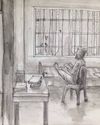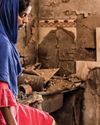
In the winter of 1908, a malaria epidemic swept through Punjab, killing three hundred thousand people in around ninety days. Although malaria epidemics were common in the region, the 1908 outbreak was the most lethal in at least forty years: 18 out of every 1,000 residents of Punjab succumbed to the illness. The death toll was even higher in the mud huts of landless labourers, artisans and servants. An official inquiry led by Major SR Christophers, a Liverpool-born doctor, found that malaria-infected the rich and the poor alike, but it was much more likely to kill in poor households.
“If we examine in detail any town affected by the epidemic, we shall find the heaviest mortality has been in those classes, which are the poorest and living in the greatest squalor,” the inquiry report, released in 1911, stated. It concluded that “the determining causes of the outbreak were excessive rainfall and ‘scarcity’; the former is an essential while the latter is an almost equally powerful influencing factor.”
Esta historia es de la edición May 2020 de The Caravan.
Comience su prueba gratuita de Magzter GOLD de 7 días para acceder a miles de historias premium seleccionadas y a más de 8500 revistas y periódicos.
Ya eres suscriptor ? Conectar
Esta historia es de la edición May 2020 de The Caravan.
Comience su prueba gratuita de Magzter GOLD de 7 días para acceder a miles de historias premium seleccionadas y a más de 8500 revistas y periódicos.
Ya eres suscriptor? Conectar

Mob Mentality
How the Modi government fuels a dangerous vigilantism

RIP TIDES
Shahidul Alam’s exploration of Bangladeshi photography and activism

Trickle-down Effect
Nepal–India tensions have advanced from the diplomatic level to the public sphere

Editor's Pick
ON 23 SEPTEMBER 1950, the diplomat Ralph Bunche, seen here addressing the 1965 Selma to Montgomery March, was awarded the Nobel Peace Prize. The first black Nobel laureate, Bunche was awarded the prize for his efforts in ending the 1948 Arab–Israeli War.

Shades of The Grey
A Pune bakery rejects the rigid binaries of everyday life / Gender

Scorched Hearths
A photographer-nurse recalls the Delhi violence

Licence to Kill
A photojournalist’s account of documenting the Delhi violence

CRIME AND PREJUDICE
The BJP and Delhi Police’s hand in the Delhi violence

Bled Dry
How India exploits health workers

Status Update
India’s telling silence on the Hagia Sophia controversy